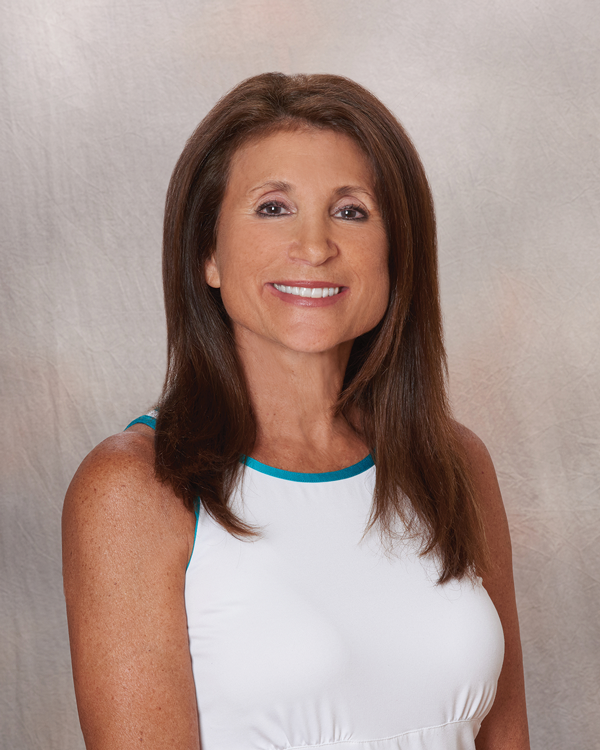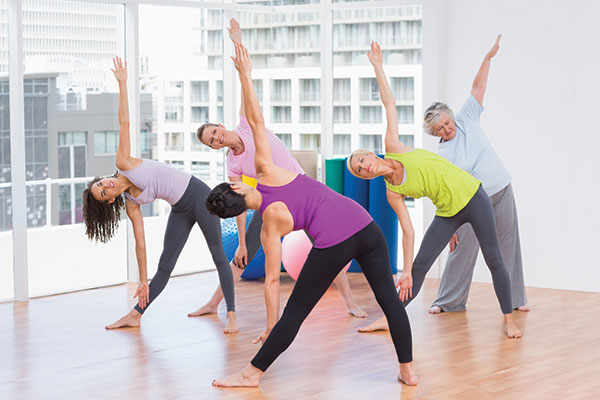Get Up. Get Motivated. Get Active.
Advice from a cancer exercise specialist on how to stay active during and after cancer treatment
by Carol Michaels, MBA, ACE, ACSM
As a cancer exercise specialist, I have a very important message for cancer survivors – stay active. Exercise not only can increase your chances of surviving cancer, but it may also reduce the side effects of cancer treatment. Not to mention, exercise will improve your overall health.
Since each person’s cancer, treatments, and side effects are unique, it is important to work with an exercise specialist or physical therapist to develop an appropriate fitness program tailored to your individual needs. Your exercise program will depend on your level of fitness prior to diagnosis, the type of cancer you were diagnosed with, and the nature of your treatment. Before designing your exercise program, your specialist should conduct a full fitness assessment so the program can be adapted to accommodate your unique health issues. You should also make sure to receive medical clearance from your doctor before starting any exercise regimen.
A cancer exercise program will start with relaxation breathing, stretching, low-intensity aerobic exercise, and posture and balance exercise. When you are ready, gentle strength training or Pilates may be added to the routine.
Exercise will increase your energy and concentration. It will improve your quality of life and enable you to participate in the activities you enjoy.
Starting an exercise program can be a challenge, but it may help motivate you to think of all the benefits to exercise. It can improve the chances of you being there for your children and grandchildren. You will also be a healthy lifestyle role model for your family. Exercise will increase your energy and concentration. It will improve your quality of life and enable you to participate in the activities you enjoy. People who exercise feel better both physically and emotionally. When you start to see the benefits of exercise, this serves as positive reinforcement to keep going.
To help you stick to your fitness program, try scheduling your exercise for the morning and make that your priority before starting your day. If you leave exercise for later in the day, you increase the chances that something might come up to interfere with your plan. Another tip is to have an exercise partner. By exercising with a friend, you can encourage each other and help keep each other accountable.
Don’t worry too much about what kinds of exercise you should be doing. All types of moderate exercise are beneficial. Think about the activities or sports that you enjoy, and do them. Do you like to walk, ride a bicycle, dance? You can build your exercise program around any activity you enjoy. The more enjoyable the exercise, the more likely you are to stick to it.
You may want to consider joining a cancer exercise group if there’s one in your area. You may find it motivational, or even just more comfortable, to work out with people who have similar health considerations and similar goals. Plus, exercising with other cancer survivors may help ease any body image anxiety you may have over the physical changes brought on by cancer. Small group exercise classes are a terrific way to form friendships, keep fit, and have fun.
Here’s a little drill to kickstart your motivation. Write down all the reasons why you want to exercise: less fatigue, better mood, more energy, reduced cancer risk. Now, whenever you start feeling the pull of the sofa, get out your list to remind yourself why it’s important to stay active.

Carol Michaels is the founder of Recovery Fitness, a cancer exercise program developed to improve recovery from cancer surgery and treatments. She is also a cancer exercise specialist, consultant, health and wellness speaker, and author of Exercises for Cancer Survivors. You can learn more about Carol at CarolMichaelsFitness.com, connect with her on Facebook at Facebook.com/CarolMichaelsFitness, or follow her on Twitter @CarolJMichaels.
This article was published in Coping® with Cancer magazine, September/October 2017.


